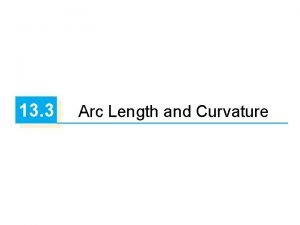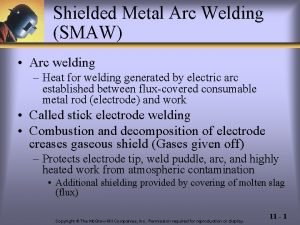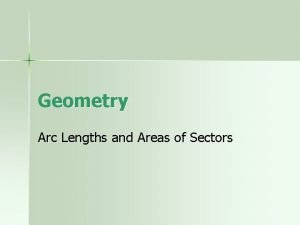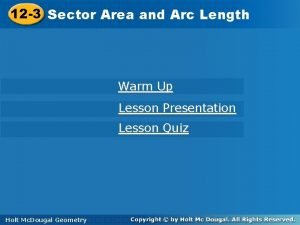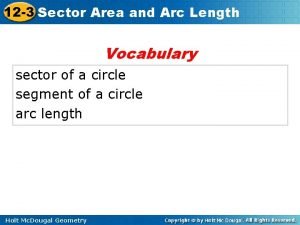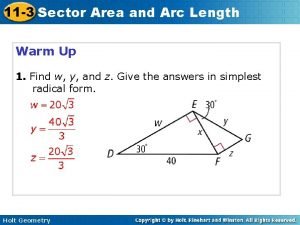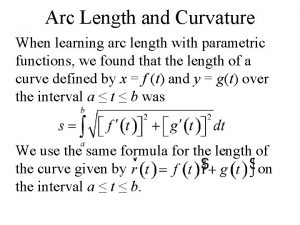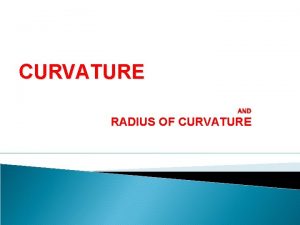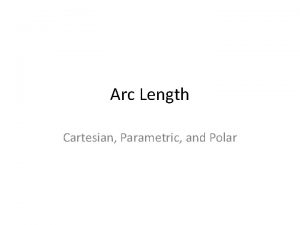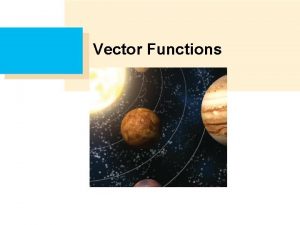Sec 14 3 Arc Length and Curvature Definition








- Slides: 8

Sec 14. 3 Arc Length and Curvature Definition: The length of a space curve, a ≤ t ≤ b , that is traversed exactly once as t increases from a to b is given by

Definition: The arc length function s The length of the part of the space curve between r(a) and r(b) is given by Note: This note is useful to parametrize a curve with respect to arc length.

Definition: The curvature of a curve The curvature, κ, of a space curve at a given point is a measure of how quickly the curve changes direction at that point. It is defined to be the rate of change of the unit tangent vector with respect to arc length.

Theorem: The curvature of a curve given by the function r is For a plane curve, y = f (x),

Definitions: The Normal and Binormal Vectors The principal unit normal vector N(t) (or simply unit normal) is defined as The binormal vector is defined as the vector B(t) = T(t) × N(t). It is perpendicular to both T and N, and is also a unit vector.

Sec 14. 4 Motion in Space: Velocity and Acceleration Definitions: Suppose a particle moves through space with a position vector r(t). The velocity vector at time t is: Hence, the velocity vector is also the tangent vector and points in the direction of the tangent line. The speed of the particle at time t is the rate of change of distance with respect to time: The acceleration of the particle is:

Definitions: Tangential and Normal Components of Acceleration Let v = |v| be the speed of the particle, then Hence, v = v. T , and differentiating with respect to t gives: Also, and Hence,

If we denote the tangential and normal components of acceleration, respectively, by then where,
